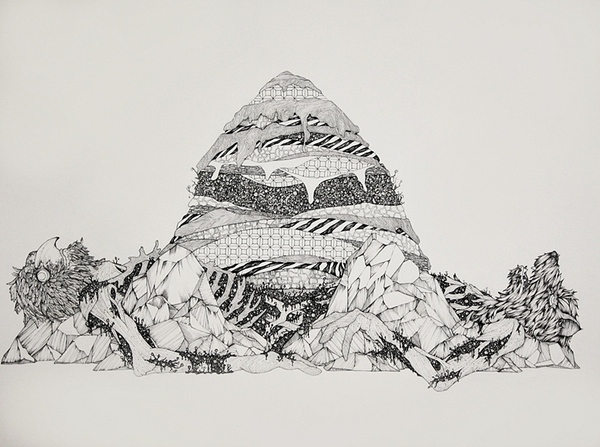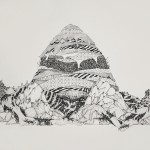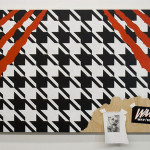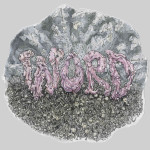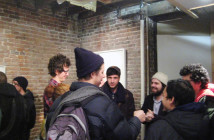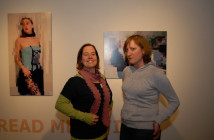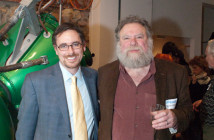The Boston artists Jack W. Schneider, Alexander DeMaria, and Todd White came together in January to present “Dude, where’s my apocalypse?” at the fivesevendelle project space.
One of the most compelling aspects of the show is the impetus and effect of the grouping of the three artists. DeMaria, White and Schneider may not seem to be the likeliest combination to be sharing this space, which is one floor of a 19th century brownstone located in Boston’s Mission Hill neighborhood Stylistically, the greatest kinship lies between White and DeMaria, who render many of their drawings in meticulously inked details. White’s images are somewhat grotesque and supernatural in nature, reminiscent of adolescent doodles that have evolved into elaborate accomplishments of design. The intricacy of drawings like “Bipolar Monster” and “Happy Twins” is mesmerizing. DeMaria’s pen-and-ink drawings are as equally detailed as White’s work, but the artists deviate in their choice of subject matter. DeMaria’s mythological focus clashes with the mystical fantasy of White’s drawings, yet they still both illustrate an interest in ecologically-themed deities or monsters. DeMaria’s “The Sleeping Moss” and White’s “Caveman Man” each blend an anthropomorphic creature with a geological formation.
Schneider’s contributions to the exhibition come largely in the form of a varied grouping of paintings. Several of his pieces are boldly patterned images on mid-sized wood panels and in content, this work deals with concepts of physical breakdown and decay. While also engaging in an exploration of the artistic process, the paintings’ theme of natural process offers a fit analogy to the work of DeMaria and White. Contrasting the patterned works is “Mulberry Street,” a small watercolor set apart in an enclave. Unlike its bolder companions, the painting is a realistic representation of a coffee cup and surrounding detritus. Both the work’s familiar imagery and its overt sense of abandon detracts from the show.
The connection between the three artists occurs thematically—and not necessarily obviously—through the show’s focus on unexpected juxtapositions: combinations of the folk and the modern. This is also where the show’s title finds its relevance. The artists, for the most part, do not deal with the apocalypse in traditional, overt ways such as the eerie stillness of an abandoned coffee cup. This is where much of the show’s power and charm lies. Their works as displayed at fivesevendelle share a feeling, a mood that begins to hint at the artists’ personal concepts of the apocalypse, and that feeling is not ominous, but unsettling and that sense not of danger, but of a unexplainable discomfort. It is evoked by White’s “Word as Flesh in the Nebulous Bonestorm” and, very differently, by Schneider’s “Houndstooth 2.0.” Schneider suggests that it’s what we don’t know that makes us afraid. He speaks about how, throughout history, the apocalypse has been represented by different cultures in various ways and it’s not always inexorable doom. “What gets confused a lot, though,” he says, “is that a lot of people picture the post-apocalypse as being just devastation and ruin. Thinking Biblically, people used to actually consider the coming of the apocalypse as a good thing, and the post-apocalypse as paradise.” This take on the subject comes across subtly in the work of all three artists, who do not portray doom, but rather uncertainty and a state of limbo that can also be interpreted optimistically, as potential.
- Alexander DeMaria, The Sleeping Moss, ink on paper, 2009.
- Jack W. Schneider, Houndstooth 2.0, acrylic, enamel, graphite, paper on panel. 2009.
“Dude, where’s my apocalypse” was on view January 15 - 30 at fivesevendelle project space.
All images are courtesy of the artists.

